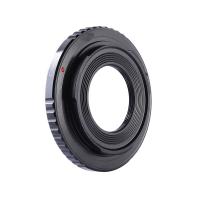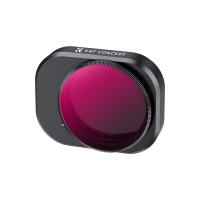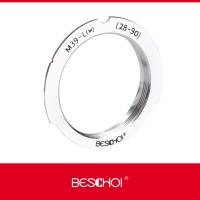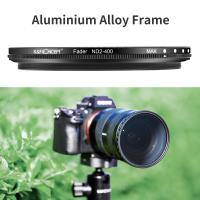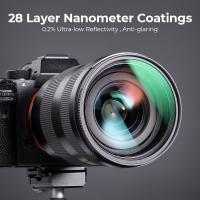What Are The Precautions When Using A Microscope ?
When using a microscope, there are several precautions that should be taken to ensure accurate results and prevent damage to the equipment. Firstly, it is important to handle the microscope with care and avoid any rough or sudden movements. Additionally, one should always start with the lowest magnification objective lens and gradually increase the magnification to avoid damaging the specimen or lens. It is also crucial to clean the lenses before and after use using lens paper or a soft cloth to remove any dust or debris. Furthermore, it is advisable to keep the microscope covered when not in use to protect it from dust and other contaminants. Lastly, it is important to follow the manufacturer's instructions and guidelines for proper usage and maintenance of the microscope.
1、 Proper handling and care of the microscope equipment
When using a microscope, it is essential to take certain precautions to ensure accurate results and maintain the longevity of the equipment. Proper handling and care of the microscope equipment are crucial in this regard.
Firstly, it is important to handle the microscope with care. Microscopes are delicate instruments, and rough handling can damage the lenses, stage, or other components. Always hold the microscope with both hands, one on the arm and the other supporting the base. Avoid placing any unnecessary pressure on the lenses or objectives.
Secondly, keep the microscope clean and free from dust and debris. Use lens paper or a soft cloth to clean the lenses and objectives. Avoid using harsh chemicals or solvents that can damage the lens coatings. Additionally, regularly clean the stage and other parts of the microscope to prevent the accumulation of dirt or oil, which can affect the quality of the images.
Furthermore, it is important to store the microscope properly when not in use. Keep it covered with a dust cover or in a cabinet to protect it from environmental factors such as dust, humidity, or temperature fluctuations. Avoid exposing the microscope to direct sunlight or extreme temperatures, as this can damage the lenses and other components.
In addition to these traditional precautions, the latest point of view also emphasizes the importance of maintaining a clean working environment. This includes ensuring that the area where the microscope is used is free from clutter, spills, and other potential hazards. It is also recommended to wear gloves and use a clean workspace to prevent contamination of samples and to protect the user from potentially harmful substances.
In conclusion, proper handling and care of the microscope equipment are essential precautions when using a microscope. By following these guidelines, users can ensure accurate results, prolong the lifespan of the microscope, and create a safe working environment.

2、 Ensuring cleanliness of the microscope and slides
When using a microscope, there are several precautions that need to be taken to ensure accurate and reliable results. One of the most important precautions is ensuring the cleanliness of the microscope and slides.
Firstly, it is crucial to clean the microscope before and after each use. Dust and debris can accumulate on the lenses and affect the quality of the image. To clean the microscope, use a soft, lint-free cloth or lens paper to gently wipe the lenses. Avoid using harsh chemicals or abrasive materials that could damage the lenses.
Similarly, the slides used for observation should be clean and free from any contaminants. Before placing a specimen on a slide, make sure it is free from dust, fingerprints, or any other foreign particles. Cleaning the slides with a mild detergent and water solution, followed by rinsing with distilled water, can help ensure their cleanliness.
Additionally, it is important to handle the microscope and slides with care. Avoid touching the lenses with bare hands, as the oils from the skin can leave smudges and affect the image quality. Always hold the microscope by its base and arm to prevent any accidental damage.
In the latest point of view, with the ongoing COVID-19 pandemic, it is also essential to follow proper hygiene practices when using a microscope. This includes washing hands thoroughly before and after handling the microscope and slides. Using hand sanitizers or wearing gloves can provide an extra layer of protection.
Furthermore, it is advisable to maintain a clean and organized workspace. Keep the microscope and slides away from food, drinks, or any other potential sources of contamination. Regularly disinfecting the surfaces and equipment in the laboratory can help prevent the spread of any pathogens.
In conclusion, ensuring the cleanliness of the microscope and slides is a crucial precaution when using a microscope. By following proper cleaning procedures and maintaining good hygiene practices, accurate and reliable observations can be achieved.
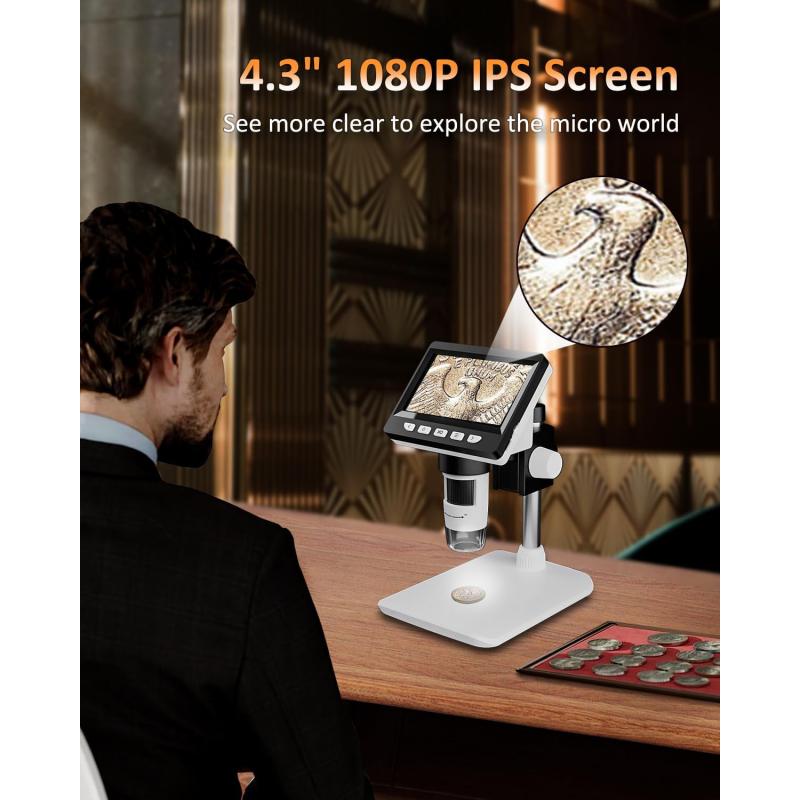
3、 Adjusting the light source and focus carefully
When using a microscope, there are several precautions that need to be taken to ensure accurate and safe observations. One of the most important precautions is to adjust the light source and focus carefully. This is crucial because improper lighting or focusing can lead to distorted or unclear images, making it difficult to observe the specimen accurately.
To adjust the light source, it is important to ensure that the microscope is properly illuminated. This can be done by adjusting the intensity of the light and positioning it at the correct angle. Too much or too little light can affect the clarity of the image, so it is important to find the right balance. Additionally, it is important to avoid shining the light directly into the eyes, as it can cause discomfort or damage to the eyesight.
Focusing the microscope is equally important. It is necessary to start with the lowest magnification and gradually increase it while adjusting the focus. This allows for a clear and detailed view of the specimen. It is also important to avoid touching the lens with bare hands, as fingerprints can affect the quality of the image. Instead, it is recommended to use lens paper or a soft cloth to clean the lens if necessary.
In addition to these traditional precautions, the latest point of view also emphasizes the importance of maintaining a clean and sterile environment when using a microscope. This is particularly relevant in laboratory settings where microorganisms or contaminants can interfere with the observations. Regularly cleaning the microscope and using sterile slides and coverslips can help prevent contamination and ensure accurate results.
In conclusion, adjusting the light source and focus carefully is a crucial precaution when using a microscope. It is important to find the right balance of light intensity and angle to illuminate the specimen properly. Additionally, focusing the microscope gradually and avoiding touching the lens with bare hands are essential for clear and accurate observations. Lastly, maintaining a clean and sterile environment is also important to prevent contamination and ensure reliable results. By following these precautions, users can maximize the effectiveness of the microscope and obtain accurate and reliable observations.

4、 Avoiding excessive magnification to prevent damage to the specimen
When using a microscope, there are several precautions that need to be taken to ensure accurate observations and prevent damage to the specimen. One of the most important precautions is to avoid excessive magnification. While it may be tempting to zoom in as much as possible to get a closer look at the specimen, doing so can actually cause harm. Excessive magnification can lead to distortion, loss of clarity, and even physical damage to the specimen. It is crucial to use the appropriate level of magnification for the specimen being observed.
Another precaution to consider is proper handling of the microscope. Microscopes are delicate instruments that require careful handling to avoid damage. When moving or adjusting the microscope, it is important to hold it by the base and arm, rather than grabbing onto the lenses or other fragile parts. Additionally, it is essential to clean the lenses and other surfaces with the appropriate cleaning materials to prevent smudging or scratching.
Furthermore, it is important to ensure proper lighting conditions when using a microscope. Adequate lighting is necessary to achieve clear and accurate observations. Insufficient lighting can result in dim or blurry images, making it difficult to analyze the specimen effectively. On the other hand, excessive lighting can cause glare or overheating, which can also impact the quality of the observations. Finding the right balance of lighting is crucial for optimal microscope usage.
In recent years, there has been an increasing emphasis on the importance of proper ergonomics when using a microscope. Prolonged use of a microscope can lead to discomfort or even injury if not done in a ergonomically sound manner. It is recommended to maintain a comfortable posture, adjust the microscope to eye level, and take regular breaks to prevent strain on the neck, back, and eyes.
In conclusion, when using a microscope, it is important to take precautions to ensure accurate observations and prevent damage to the specimen. Avoiding excessive magnification, handling the microscope with care, ensuring proper lighting conditions, and considering ergonomics are all essential aspects of microscope usage. By following these precautions, researchers and scientists can obtain reliable and high-quality results from their microscopic observations.






















